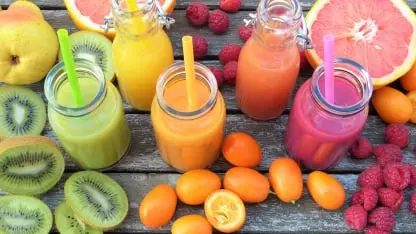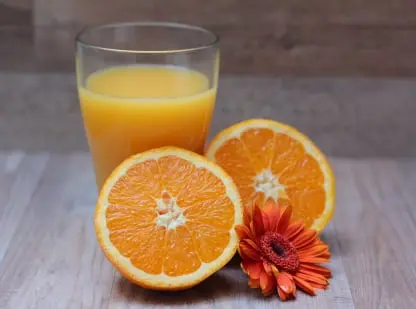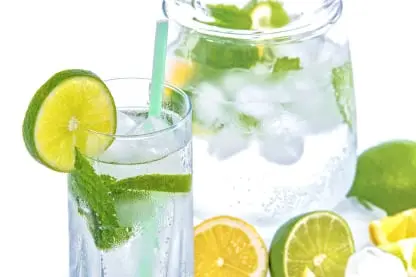Fruit juice concentrate quality inspection app:
Fruit juice concentrate quality inspection app thru fruit juice extraction and pressing, fruit juice concentrate bottling, maintain consistent fruit juice quality control.

Fruit juice concentrate Supplier quality inspection & management
What affects the quality of fruit juice?
From raw materials to end products, in storage and transportation, all physical, chemical and microbial effects jointly and continuously act on the fruit juice. They cause the browning, souring, turbidity and precipitation of the fruit juice.
Fruit quality
The dirt, foreign matters, microbes, and decays in fruits will greatly affect the fruit juice quality. So in fruit sorting and cleaning process, we should reduce the impurities as much as possible.
People usually adopt mechanical crushing, pressing, extraction, pulping and other physical technology to produce raw fruit juice and fruit pulps. Before crushing, the fruits need precook or preheat.
To preserve the fruits according to their physical characteristics can prevent them from microbiological spoilage.

Fruit juice concentrate Quality inspections during production
View App Specifications.
Most of juice quality depends on its raw material or ingredient’s quality, that is, fruits, water, sweeteners, additives, flavors, preservatives, etc. and more focus was on raw material or ingredients. As for the production of premium quality product, high-quality raw fruits, which are free from any injuries or contamination, are needed. These should be free from any microbial hazard such as yeast or mold existences, or the presence of any pathogenic microorganism that will compromise with the final quality and safety of the product. All physiochemical parameters such as taste, texture, acidity, brix, pulp concentration, additives levels, etc., should be appropriately done in accordance with the type of final product (Ashurst et al., 2017). Furthermore, fruit extract or pulp should be sterilized before the production of juices or smoothies. Next will be the water quality (as described in detail in this chapter): it should be cold lime soft, filtered, neutralized, and disinfected. Some chemical substances are used in juices that are proved to be hazardous for health as they contain heavy metals, strains of mycotoxins, or radioactive substances. European regulations limit the use of these substances, i.e., the maximum permittable limit for patulin is 50 μg/L in grape juice while the ochratoxin limit is 2 μg/L. These substances should be used in the proper quantity to prevent safety hazards.

Fruit juice concentrate Quality control & management
Oxygen participates in reactions affecting the juices quality in terms of nutritional and physicochemical parameters, such as vitamins (C and E), carotenoids, polyphenols, organic acids, pH, and color (Anaya-Esparza et al., 2017). For thermal processing, nonenzymatic browning is the main default, it involves complex interactions between Maillard reactions, oxidative reactions, such as oxidation of vitamin C, and acid-catalyzed sugar degradation. Chemical resulting from these reactions give different unfavorable flavor notes to the juices, and the intensity of brown juice color which will determine product acceptability and consumer purchase behavior (Buvé et al., 2018). For alternative processing, such as high pressure, the enzymatic browning may also occur. Origin of enzymatic browning is structural disorganization of the plant cell in juice fabrication which destroys the barriers between substrates (phenolic compounds and oxygen) and enzymes (polyphenol oxidases and peroxidases) found in fruit tissues. This leads to a direct contact between the two parties producing in the first phase quinones which, in the second phase, polymerize or react with other compounds of the medium, such as amino acids and proteins to form brown pigments in the juice.

Daily Fruit juice concentrate factory hygiene checklist
There are several questions in fruit juice quality control besides the quantification and the ridge regression analysis. Control of juice properties described for the semi-finished product and the final juice available to the consumer is common practice in the European Community. Such properties are, for example, direct juice or re-diluted concentrate, fruit purity and geographical origin. It is also possible to detect so far unknown problems in the juices based on classification to the authentic models, as the statistics can define the region in the spectrum that is differing from the model. The region can be defined by the so-called “buckets” (for example, equidistant subfractions of the spectrum) or also individual data points of the spectrum. Likewise, it was possible to determine 5-hydroxymethylfurfural as a reason for spectra to be outliers, as the statistics directly pointed to the resonances of this molecule and a search in the reference compound database revealed the identity. This compound can be found in juices, if during treatment the normal temperature is exceeded or if sugar colour is added to the juice. In a similar way, it was possible to detect an excessive concentration of quinic acid in the whole acid profile, which indicates the use of unripe apples in juice production.